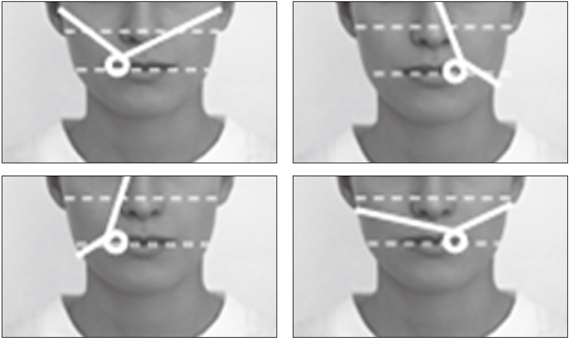J Korean Acad Nurs.
2012 Feb;42(1):116-124. 10.4040/jkan.2012.42.1.116.
Effects of Rotated Endotracheal Tube Fixation Method on Unplanned Extubation, Oral Mucosa and Facial Skin Integrity in ICU Patients
- Affiliations
-
- 1Gangneung Asan Hospital, Doctoral Student, Department of Nursing, Kangwon National University, Chuncheon, Korea.
- 2Department of Nursing, Kangwon National University, Chuncheon, Korea. yrchae@kangwon.ac.kr
- KMID: 1245164
- DOI: http://doi.org/10.4040/jkan.2012.42.1.116
Abstract
- PURPOSE
The study was done to compare effects of two endotracheal tube (ET tube) fixation methods (rotated fixation versus conventional) on unplanned extubation and skin integrity for orally intubated patients in intensive care units.
METHODS
The research design was a non-equivalent control group with repeated measures design. Participants were 80 patients; 40 participants assigned to each group. ET tube for the experimental participants fixed with rotated method every morning. Unplanned extubation was assessed by bedside nurses using the unplanned extubation report form. Oral mucosa and facial skin integrity were assessed using oral assessment guide and facial skin integrity assessment guide at day 3, 7, 10 and 14.
RESULTS
There was no difference in the unplanned extubation rate between the two groups. Oral mucosa impairment scores for the rotated fixation method were significantly lower at day 7 (p=.044), 10 (p=.048) and day 14 (p=.037). Also facial skin integrity impairment scores for the same group were significantly lower at day 7 (p=.010), 10 (p=.003), and 14 (p=.002).
CONCLUSION
Results of the study suggest that the rotated fixation method is effective for these patients, to prevent impairment of oral mucosa and facial skin integrity. Further research is needed to prevent unplanned extubation.
Keyword
MeSH Terms
Figure
Reference
-
1. Barnason S., Graham J., Wild M.C., Jensen L.B., Rasmussen D., Schulz P., et al. Comparison of two endotracheal tube securement techniques on unplanned extubation, oral mucosa, and facial skin integrity. Heart Lung. 1998. 27:409–417.2. Birkett K.M., Southerland K.A., Leslie G.D. Reporting unplanned extubation. Intensive and Critical Care Nursing. 2005. 21:65–75.3. Carlson J., Mayrose J., Krause R., Jehle D. Extubation force: Tape versus endotracheal tube holders. Annals of Emergency Medicine. 2007. 50:686–691. http://dx.doi.org/10.1016/j.annemergmed.2007.05.013.4. Chang L.Y., Wang K.W., Chao Y.F. Influence of physical restraint on unplanned extubation of adult intensive care patients: A case-control study. American Journal of Critical Care. 2008. 17:408–415.5. Choi E.H., Kim I.H., Park M.H., Lee I.Y. The comparison of the unplanned extubation according to the method for fixing the endotracheal tube. Clinical Nursing Research. 2006. 12(2):7–16.6. Choi Y.K., Kim K.S. A study on the influencing factor of unplanned endotracheal extubation in ICUs. Journal of Korean Society of Quality Assurance in Health Care. 2002. 9(1):74–89.7. De Leyn P., Bedert L., Delcroix M., Depuydt P., Lauwers G., Sokolov Y., et al. Tracheostomy: Clinical review and guidelines. European Journal of Cardio-thoracic Surgery. 2007. 32:412–421. http://dx.doi.org/10.1016/j.ejcts.2007.05.018.8. Eilers J., Berger A.M., Petersen M.C. Development testing and application of the oral assessment guide. Oncology Nursing Forum. 1988. 15:325–330.9. Esteban A., Anzueto A., Alía I., Gordo F., Apezteguía C., Pálizas F., et al. How is mechanical ventilation employed in the intensive care unit? An international utilization review. American Journal of Respiratory and Critical Care Medicine. 2000. 161:1450–1458.10. Grap M.J., Glass C., Lindamood M.O. Factors related to unplanned extubation of endotracheal tubes. Critical Care Nurse. 1995. 15(2):57–65.11. Jung Y.Y. Reliability testing of an oral assessment guide for patients receiving stomatoxic treatment. Seoul Journal of Nursing. 1996. 10(1):45–51.12. Kaplow R., Bookbinder M. A comparison of four endotracheal tube holders. Heart Lung. 1994. 23:59–66.13. Kim H.S. A study on the influencing factor of unplanned extubation in MICU. 2004. Seoul: Chung-Ang University;Unpublished master's thesis.14. Kim J.S., Lee E.S., Park J.H. Effects on unplanned extubation, oral mucosa, and facial skin integrity of new method to secure endotracheal tube. Journal of Korean Clinical Nursing Research. 2009. 15(3):49–59.15. Ko I.S., Kim S.J., Park H.A., Song K.A., Shin K.L., Oh G.S., et al. The lippincott manual of nursing practice. 2009. 8th ed. Seoul: Hyunmoonsa.16. Koo B.N., Koh S.O., Kwon T.D. Predictors for reintubation after unplanned endotracheal extubation in multidisciplinary intensive care unit. Korean Journal of Critical Care Medicine. 2003. 18:20–25.17. Lee J.J., Lee K.M., Lee Y.B., In B.M., Um D.J., Choi R. Unplanned extubation and factors affecting reintubation in ICU patients. Korean Journal of Critical Care Medicine. 1996. 11:179–183.18. Levy H., Griego L. A comparative study of oral endotracheal tube securing methods. Chest. 1993. 104:1537–1540.19. Lewis R.J. Tracheostomies: Indications, timing, and complications. Clinics in Chest Medicine. 1992. 13:137–149.20. Listello D., Sessler C.N. Unplanned extubation: Clinical predictors for reintubation. Chest. 1994. 105:1496–1503.21. Lucas da Silva P.S., de Carvalho W.B. Unplanned extubation in pediatric critically ill patients: A systematic review and best practice recommendations. Pediatric Critical Care Medicine. 2010. 11:287–294. http://dx.doi.org/10.1097/pcc.0b013e3181b80951.22. Murdoch E., Holdgate A. A comparison of tape-tying versus a tube-holding device for securing endotracheal tubes in adults. Anaesthesia and Intensive Care. 2007. 35:730–735.23. Owen R., Castle N., Hann H., Reeves D., Naidoo R., Naidoo S. Extubation force: A comparison of adhesive tape, non-adhesive tapeand a commercial endotracheal tube holder. Resuscitation. 2009. 80:1296–1300. http://dx.doi.org/10.1016/j.resusci-tation.2009.08.007.24. Richmond A.L., Jarog D.L., Hanson V.M. Unplanned extubation in adult critical care: Quality improvement and education payoff. Critical Care Nurse. 2004. 24(1):32–37.25. Treloar D.M., Stechmiller J.K. Use of a clinical assessment tool for orally intubated patients. American Journal of Critical Care. 1995. 4:355–360.26. Yeh S.H., Lee L.N., Ho T.H., Chiang M.C., Lin L.W. Implications of nursing care in the occurrence and consequences of unplanned extubation in adult intensive care units. International Journal of Nursing Studies. 2004. 41:255–262. http://dx.doi.org/10.1016/s0020-7489-(03)00136-6.
- Full Text Links
- Actions
-
Cited
- CITED
-
- Close
- Share
- Similar articles
-
- Predictors for Reintubation after Unplanned Endotracheal Extubation in Multidisciplinary Intensive Care Unit
- Case-control Study on Risk Factors of Unplanned Extubation Based on Patient Safety Model in Critically Ill Patients with Mechanical Ventilation
- Management of Detachment of Pilot Balloon During Intraoral Repositioning of the Submental Endotracheal Tube
- Incidence of Unplanned Extubation and Related Factors of Reintubation in the Neonatal Intensive Care Unit
- Difficult Extubation of Endotracheal Tube: Two case reports


